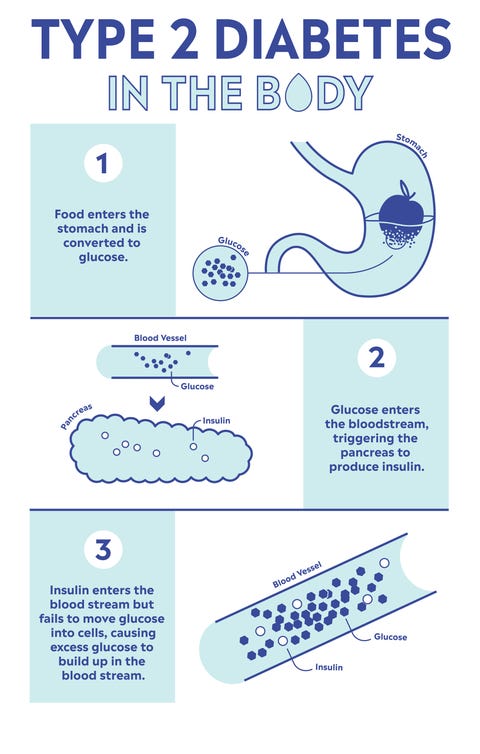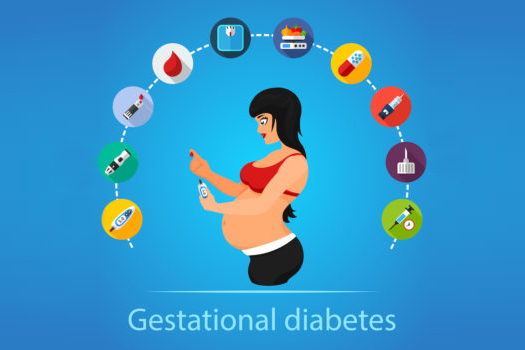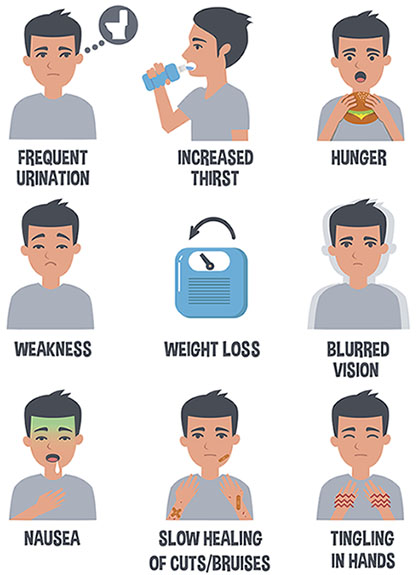
Diabetes is a disease that occurs when your blood glucose (or blood sugar) is too high. Blood glucose is your main source of energy. It comes from the food that you eat. Insulin (a hormone made by the pancreas) helps glucose from food get into your cells to be used for energy. Sometimes your body doesn’t make enough or any insulin, glucose then stays in your blood and doesn’t reach your cells.
Types:
The most common types of diabetes are Type 1, Type 2 and Gestational diabetes.

Type 1:
If you have type 1 diabetes, your body does not make insulin. Your immune system attacks and destroys the cells in your pancreas that make insulin. Type 1 is an autoimmune disease. The immune system attacks and destroys cells in the pancreas.Type 1 is usually diagnosed in children and young adults, although it can appear at any age.About 10 percent of people with diabetes have this type. People with type 1 need to take insulin everyday to stay alive.
Type 2:

If you have type 2 diabetes, your body does not make insulin or use insulin well.Type 2 occurs when your body becomes resistant to insulin and sugar builds up in your blood. You can develop type 2 at any age, even during childhood. However this type of diabetes occurs more often in middle-aged and older people. Type 2 is the most common type of diabetes.
Gestational:

Gestational diabetes develops in some women when they are pregnant. Insulin-blocking hormones produced by the placenta cause this type of diabetes. Most of the time this type of diabetes goes away after the baby is born. However, if you’ve had gestational diabetes, you have a greater chance of developing type 2 later in life.
Symptoms:

General Symptoms:
- Increased hunger
- Increased thirst
- Weight loss
- Frequent urination
- Blurry vision
- Extreme fatigue
- Sore that won’t heal.
Symptoms In Men:
- In addition to the general symptoms, men with diabetes may have a decreased sex drive, erectile dysfunction and poor muscle strength.
Symptoms in Women:
- Women with diabetes can also have symptoms such as urinary tract infections, yeast infections and dry, itchy skin.
Symptoms of Type 1:
- Extreme hunger
- Increased thirst
- Unintentional weight loss
- Frequent urination
- Blurry vision
- Fatigue
Symptoms of Type 2:
- Increased hunger
- Increased thirst
- Increased urination
- Blurry vision
- Fatigue
- Sore that are slow to heal
Gestational Symptoms:
Most women with gestational diabetes don’t have any symptoms. The condition is often detected during a routine blood test sugar or oral glucose tolerance test that is usually performed between the 24th and 28th weeks of gestation.
Risk Factors:
Type 1:
You’re more likely to get type 1 diabetes if you’re a child or a teenager, you have a parent or sibling with the condition or you carry certain genes that are linked to the disease.
Type 2:
Your risk for type 2 increase if you:
- Are overweight
- Are 45 or older
- Have a parent or sibling with the condition
- Aren’t physically active
- Have had gestational diabetes
- Have prediabetes
- Have high blood pressure, high cholesterol or high triglycerides
Gestational:
Your risk for Gestational Diabetes increases if you:
- Are overweight
- Are over 25
- Had gestational diabetes during a past pregnancy
- Have given birth to a baby weighing more than 9 pounds.
- Have a family history of type 2
- Have polycystic ovary syndrome (PCOS)
Prevention:
Type 1 is not preventable because it is caused by a problem with the immune system. Some causes of type 2, such as genes or age, aren’t in your control either. Here are a few things you can do to prevent it:
- Get at least 150 minutes per week of aerobic exercise (eg: cycling or walking)
- Cut saturated and trans fat, along with refined carbohydrates out of your diet.
- Eat more fruits, vegetables and whole grains.
- Eat smaller portions
- Try to lose 7 percent of your body weight if you are overweight or obese.
Wrapping Up:
Type 1 are caused by factors out of your control, whereas Type 2 can be prevented with better food choices, increased exercise and weight loss.



Pingback: Obesity- How It Takes A Toll On You | Life |Health | BTP
Pingback: Anxiety- All You Need To Know About It. | Life Health | BTP